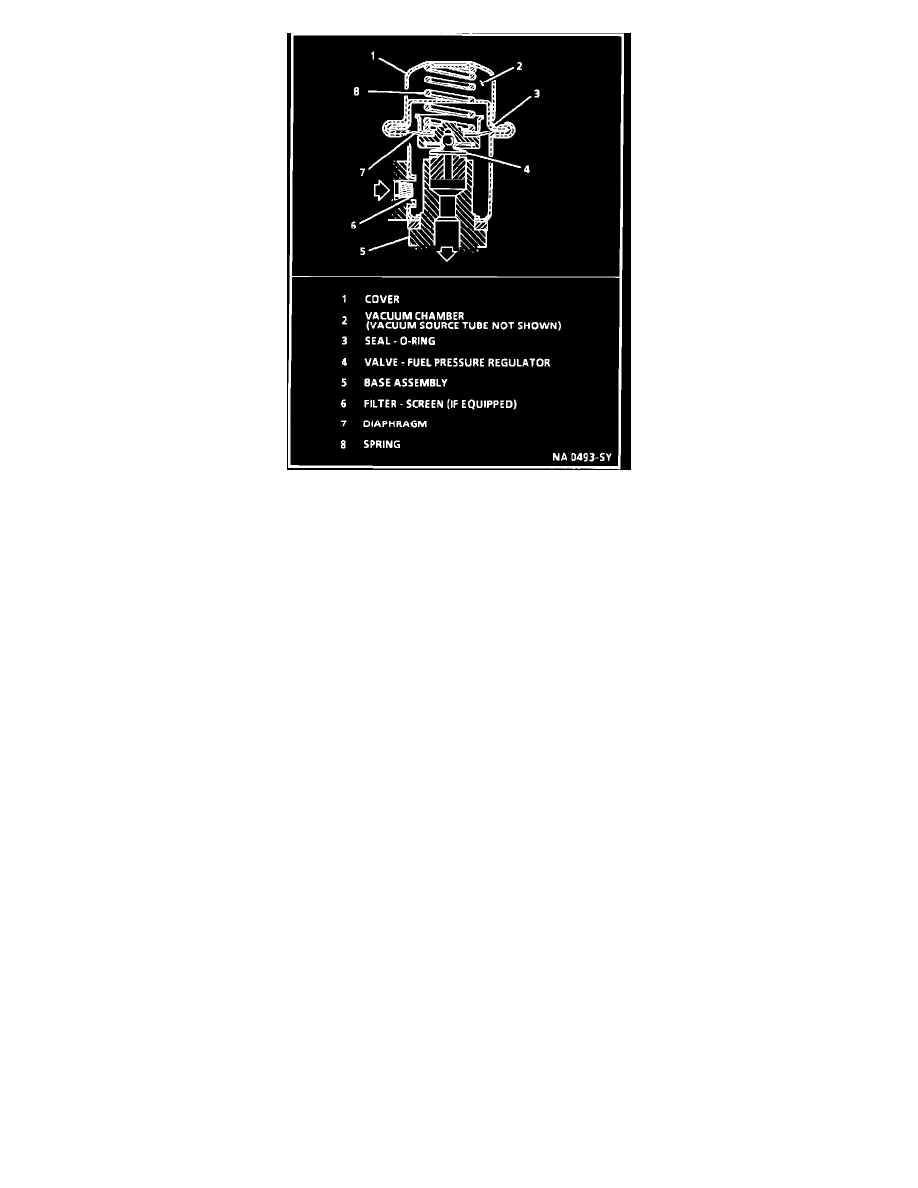LeSabre V6-231 3.8L VIN L SFI (1992)

Fuel Pressure Regulator (Cut-Away View)
DESCRIPTION
The fuel pressure regulator, located on the fuel rail, regulates fuel pressure from the pump while fuel circulates through the system and back to the tank.
The regulator is a vacuum operated pressure relief valve that consists of a housing, diaphragm, calibrated spring, fuel inlet (from the fuel rail), fuel
outlet (return to the fuel tank), ball valve, and vacuum port.
OPERATION
The function of the regulator is to maintain a constant pressure differential across the injectors at all times, compensating for changing engine loads by
increasing fuel pressure as engine vacuum drops. The pressure regulator is mounted at the end of the fuel rail, and is serviced as a complete assembly.
With fuel pump pressure on one side, spring pressure and intake manifold vacuum on the other, the varying pressure on the vacuum side of the
diaphragm operates the relief valve. When intake manifold is high (low manifold pressure) indicating light engine load, only the spring pressure works
against the valve. When engine vacuum is low (high manifold pressure), the increased pressure in the diaphragm assists the spring pressure working on
the valve, requiring greater fuel pressure to open the valve and allow the excess fuel to circulate back to the tank.
The system operates in an acceptable pressure range of 284-325 kPa (41.0-47.0 psi) with the engine running.
